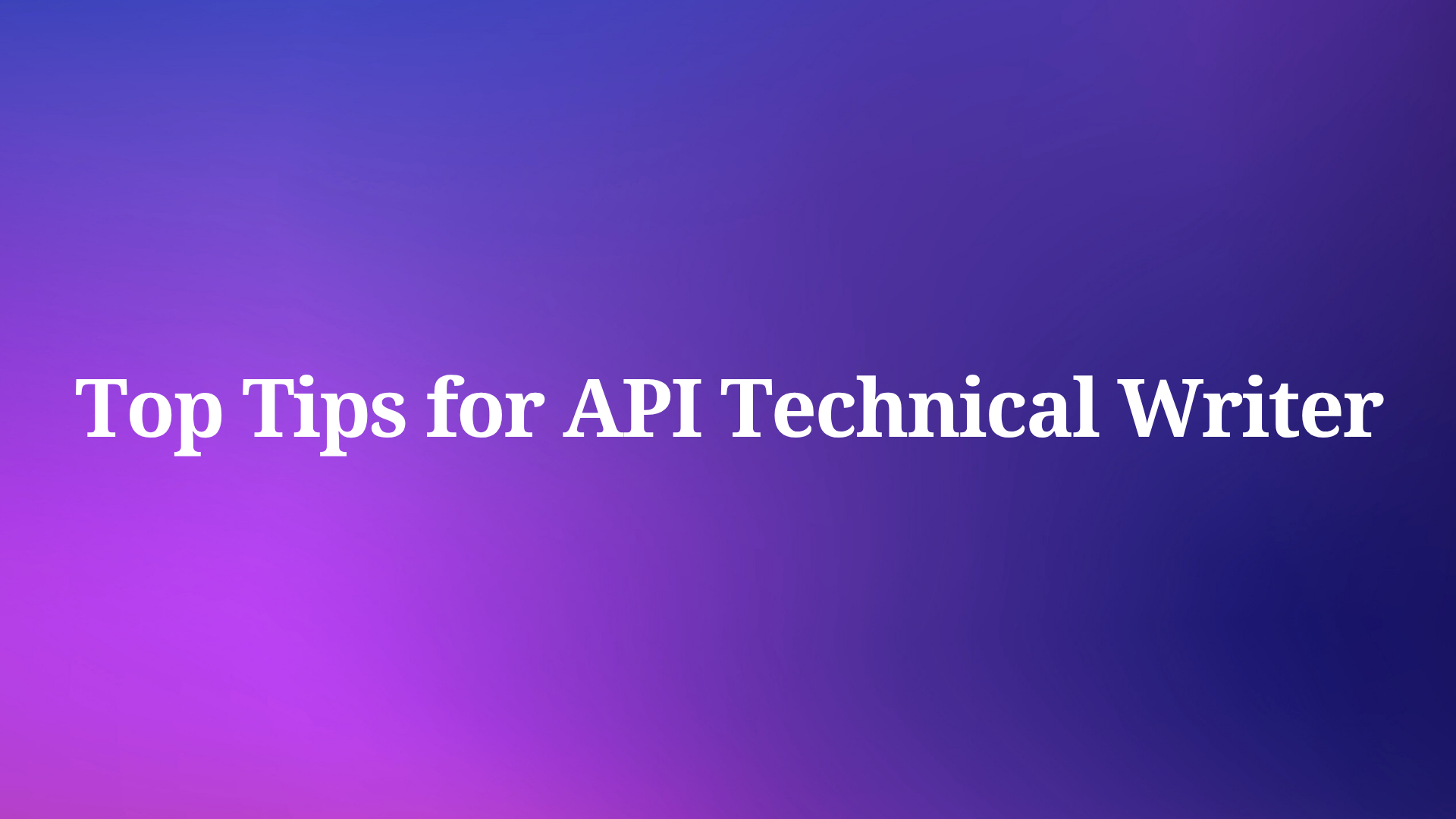Effective communication is essential for the successful implementation of any Application Programming Interface (API). Well-crafted API documentation serves as the cornerstone of this communication, providing developers with a clear and comprehensive understanding of how to interact with the API.
To understand what other features Apidog provides, make sure to click the button below!

This article explores a collection of best practices and tools that can be leveraged to craft exceptional API documentation, ensuring its usability and fostering a thriving developer community around your API.
Creating a Solid Foundation for API Documentation
Structure and Organization
Clear Navigation: Employ a logical and intuitive table of contents, allowing developers to quickly locate relevant information. Consider a sidebar navigation menu for easy access to core sections.
Searchable Content: Implement a robust search function to enable developers to find specific details within the documentation.
Logical Flow of Information: Organize content in a way that fosters easy comprehension. A recommended structure could include:
- Introduction: Briefly explain the purpose and functionalities of the API.
- Getting Started Guide: Provide step-by-step instructions on setting up and integrating with the API, including API key acquisition and environment setup.
- Reference Guides: Offer in-depth explanations of features, endpoints, parameters, and responses.
- Frequently Asked Questions (FAQ): Address common developer questions and troubleshooting tips.
Clarity and Conciseness
Plain Language: Avoid technical jargon whenever possible. Opt for clear and straightforward language that a broad range of developer skill sets can understand.
Concise Explanations: Strive for focused and to-the-point explanations. Bullet points, numbered lists, and tables can enhance readability and highlight key points.
Consistent Terminology: Maintain consistent usage of terms throughout the documentation. Define technical terms in a glossary if necessary.
Examples and Use Cases: Include relevant code examples in multiple programming languages to demonstrate API usage in practical scenarios. This helps developers understand API applications and integration.
Essential Content in the Best API Documentation
API Endpoints
Comprehensive Listings: Provide a clear and organized list of all available API endpoints. Each endpoint should have its own dedicated page with detailed explanations.
Purpose and Functionality: Clearly explain the purpose and intended use of each endpoint. What action does it take? What data does it retrieve or manipulate?
Usage Guidelines: Outline the appropriate usage scenarios for each endpoint. Are there any specific restrictions or limitations?
Parameters and Responses
Request Parameters: Provide a comprehensive explanation of all request parameters (data sent to the API). Include details like:
- Parameter Name: Clearly identify each parameter name.
- Data Type: Specify the expected data type for each parameter (e.g., string, integer, boolean).
- Description: Explain the purpose and meaning of each parameter.
- Required vs. Optional: Indicate whether a parameter is mandatory or allows for flexibility.
- Example Values: Provide concrete examples of valid parameter values to illustrate proper usage.
Response Structure: Detail the structure of the response data returned by the API for each endpoint. This might include:
- Response Codes: Explain the meaning of different HTTP status codes returned by the API (e.g., 200 for success, 404 for not found).
- Response Body Format: Specify the format of the response data (e.g., JSON, XML).
- Response Fields: Describe each field within the response data, including its name, data type, and meaning.
- Example Responses: Showcase examples of response data for different scenarios (success, error conditions).
Authentication and Authorization
Clear Instructions: Provide step-by-step instructions on how developers can obtain and use API keys or other authentication methods to access the API.
Security Considerations: Outline security best practices for using the API, such as secure storage of API keys and proper data transmission protocols.
Permission Levels: Specify the access levels and permissions associated with different authentication types. What functionalities are accessible at each level?
Enhancing API Documentation
Well-written core content is crucial, but exceptional API documentation goes beyond the essentials to truly empower developers. Here's how to elevate your documentation and create a delightful user experience:
Code Samples and Tutorials
Multiple Programming Languages: Cater to a wider developer audience by providing code samples in various popular programming languages (e.g., Python, JavaScript, Java).
Demonstrating Functionality: Showcase how to use the API in real-world scenarios with well-commented code examples. This goes beyond basic syntax and dives into practical application.
Step-by-Step Tutorials: Offer comprehensive tutorials that guide developers through common integration tasks. Include screenshots or GIFs for visual learners.
Interactive Examples: Consider incorporating interactive code samples or sandboxes where developers can experiment with the API directly within the documentation.
Error Handling and Troubleshooting
Error Code Reference: Provide a comprehensive reference guide for API error codes. Each error code should have a clear explanation of the cause and potential solutions.
Debugging Tips: Offer practical debugging tips and best practices to help developers troubleshoot common API integration issues.
Example Error Responses: Include examples of error responses showcasing the error code, message, and any relevant details to aid in problem identification.
Versioning and Change Logs
Versioning Transparency: Clearly communicate API versioning practices. Explain how version changes might impact existing integrations.
Detailed Change Logs: Maintain readily accessible and well-documented change logs for each API version. Highlight new features, deprecated functionalities, and breaking changes.
Version-Specific Documentation: Consider offering version-specific documentation to ensure developers using older versions have access to relevant information.
Fostering Community and Engagement
Interactive Forums or Chat: Create a platform for developers to connect, share experiences, and ask questions. This fosters a sense of community and facilitates peer-to-peer support.
Feedback Mechanisms: Implement mechanisms for developers to provide feedback and suggestions on the documentation. This allows for continuous improvement based on user needs.
Case Studies and Success Stories: Showcase real-world examples of how developers are leveraging the API to create innovative applications. This can inspire others and demonstrate the API's value.
Introducing Apidog - Best API Documentation Tool
Let us introduce you to one of the most modern and powerful API documentation tools called Apidog.

With Apidog, you can build, test, mock, and document APIs with a sleek and intuitive user interface. Together with Apidog, see how you can streamline API documentation!
Multi-purpose, Online API Documentation With Apidog

With Apidog, you can create Apidog beautiful and detailed API documentation within a few clicks.

When you scroll down, you can extract request schema samples in different programming languages, such as the popular JavaScript, PHP, and Python.

Apidog allows you to choose if you want to publish your documentation online. If developers wish to do so, they can also create the documentation on a custom domain.
Other Recommended API Tools to Try
SwaggerHub
SwaggerHub is a popular tool for building APIs (application programming interfaces). It helps teams create detailed instructions for using their APIs, following a common standard called OpenAPI Specification. This makes SwaggerHub a good choice for professional developers who need powerful documentation features.

Key Features:
- API Design and Visualization: Tools to create and visualize APIs with OpenAPI.
- Collaboration: Share and collaborate on API designs with team members.
- Integration: Seamless integration with popular development and CI/CD tools.
- Interactive Documentation: Generate interactive documentation that allows for live testing.
- Version Management: Maintain and document multiple API versions.

Stoplight
Stoplight is not just for writing API instructions (documentation) - it is an all-in-one toolkit that helps design, document, and even test your API. Stoplight makes it easy to create APIs that are consistent and well-explained by using visual design tools, so developers can understand them quickly.
Key Features:
- Visual API Designer: Drag-and-drop interface for designing APIs.
- Automated Documentation: Automatically generate documentation from API designs.
- Mock Servers: Create mock servers to test APIs during the design phase.
- Testing: Built-in tools for API testing and validation.
- Version Control: Support for managing multiple versions of API documentation.
Postman
Postman is a powerful API development environment that includes features for API testing, automation, and documentation, making it a comprehensive tool for API lifecycle management.

Key Features:
- API Testing and Automation: Create and run tests to validate APIs.
- Interactive Documentation: Generate interactive documentation directly from Postman collections.
- Mock Servers: Create mock servers to simulate API responses.
- Collaboration: Share APIs, tests, and documentation with team members.
Conclusion
By following the best practices and leveraging the tools outlined in this article, you can craft API documentation that empowers developers and fosters a thriving developer ecosystem around your API. Remember, clear, concise, and well-structured documentation is the cornerstone of successful API adoption. Invest time in creating exceptional documentation, and reap the benefits of a developer community that understands your API's potential and actively contributes to its success.
As your API evolves, prioritize keeping documentation up-to-date and incorporate developer feedback to ensure it remains a valuable resource. This ongoing commitment to exceptional API documentation will position your API for long-term success.




